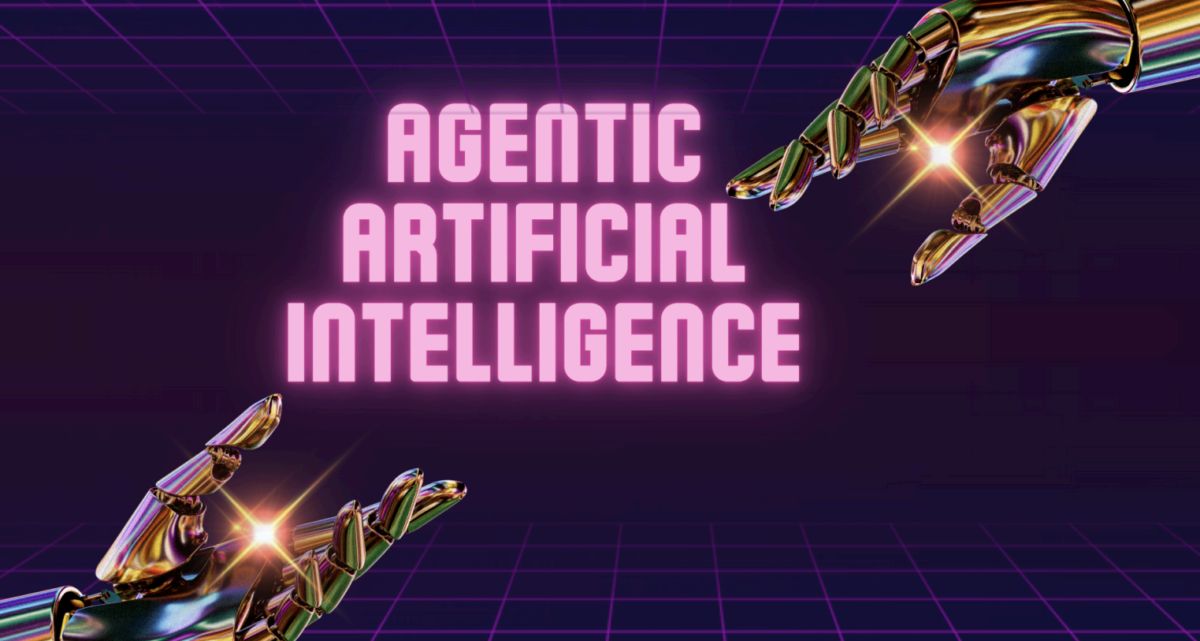How Does Ideation Fuel Software Development Success?

Imagine a world where software development is driven by innovative ideas, where every step of the process is fueled by creativity and a desire to push boundaries. This world exists, and it is made possible through the power of ideation. In this article, we will explore the concept of ideation, understand its role in software development, examine case studies of successful ideation, learn how to implement ideation in your development process, and ponder the future of ideation in the world of software development.
Understanding the Concept of Ideation
Ideation, in its simplest form, refers to the process of generating, developing, and refining ideas. It is a crucial phase in any creative endeavor, including software development. Ideation allows teams to brainstorm, assess, and explore various possibilities before finding the most viable and innovative solutions.
In the world of software development, ideation is the initial step towards creating successful and impactful products. It involves gathering a diverse group of individuals with different perspectives and skill sets to generate a wide range of ideas. These ideas are then evaluated and refined to identify the most promising ones that align with the project’s goals and objectives.
The ideation process often involves techniques such as brainstorming, mind mapping, and rapid prototyping. These methods help teams to think outside the box, challenge assumptions, and push the boundaries of what is possible. By encouraging free thinking and open communication, ideation allows for the exploration of unconventional ideas and unconventional solutions.
The Importance of Ideation in Business
Ideation is the lifeblood of innovation in business. It is the spark that ignites the development process and sets a project in motion. By encouraging and nurturing ideation, businesses can tap into the collective intelligence of their teams, leading to breakthrough ideas and improved products or services.
When businesses prioritize ideation, they create an environment that fosters creativity and empowers their employees to think beyond the status quo. This leads to a competitive advantage in the market, as innovative ideas and solutions can differentiate them from their competitors.
Furthermore, ideation helps businesses to identify new opportunities and address challenges more effectively. By exploring various possibilities and perspectives, teams can uncover hidden insights and discover unique solutions that may have otherwise been overlooked.
Moreover, ideation promotes a culture of continuous improvement within an organization. It encourages employees to actively seek out new ideas and share their thoughts, fostering a sense of ownership and engagement. This, in turn, boosts morale and productivity, as employees feel valued and empowered to contribute to the company’s success.
In conclusion, ideation is a critical process in software development and business innovation. By embracing and investing in ideation, organizations can unlock the potential of their teams and drive meaningful change. It is through ideation that groundbreaking ideas are born, leading to the development of innovative products and services that shape the future of industries.
The Role of Ideation in Software Development

Ideation, the process of generating and developing new ideas, plays a crucial role in every phase of software development. From the planning phase to the design and testing phases, ideation drives innovation and ensures that the final product meets the needs and expectations of users.
Ideation plays a pivotal role in driving the success of mobile application development. With careful ideation, software development teams can create innovative and impactful mobile applications that resonate with their target audience. Effective ideation fuels software development success by fostering creativity, enabling problem-solving, and ensuring alignment with user needs and market demands. By embracing ideation, developers can generate fresh ideas, explore different perspectives, and devise unique solutions that set their mobile applications apart. Through a robust ideation process, software development teams can identify potential challenges, anticipate user requirements, and refine their development strategies. Ideation serves as a catalyst for innovation, allowing developers to envision cutting-edge features, intuitive user interfaces, and seamless experiences. By incorporating ideation into the software development lifecycle, businesses can enhance their competitive edge, deliver high-quality mobile applications, and achieve success in the dynamic realm of mobile application development.
Ideation in the Planning Phase
During the planning phase of software development, ideation takes center stage. Teams come together to brainstorm ideas, define project goals, and gather valuable insights from stakeholders. This collaborative approach allows for a comprehensive understanding of the project’s scope and objectives.
Through ideation, teams can explore different possibilities and evaluate the feasibility of each idea. This process helps in identifying potential challenges and opportunities, enabling the team to make informed decisions about the project’s direction.
Moreover, ideation in the planning phase helps in setting realistic expectations and establishing a clear roadmap for the development process. It ensures that all stakeholders are aligned and have a shared vision for the software.
Ideation in the Design Phase
Once the planning phase is complete, teams move into the design phase, where ideation continues to play a crucial role. Designers explore various user interfaces, interaction patterns, and visual elements to create a user-friendly and visually appealing software experience.
Through ideation, designers can experiment with different design concepts, gather feedback from users, and refine their ideas. This iterative process helps in creating designs that not only meet the functional requirements but also provide an engaging and intuitive user experience.
Ideation in the design phase also enables designers to think outside the box and come up with innovative solutions. By challenging conventional design norms and exploring new possibilities, designers can create software that stands out from the competition and delights users.
Ideation in the Testing Phase
Software testing is an integral part of the development process, and ideation can greatly enhance its effectiveness. Through ideation, testers can brainstorm various scenarios, identify potential issues, and develop comprehensive test cases.
By thinking creatively and proactively, testers can uncover hidden bugs, edge cases, and usability issues that may have otherwise been overlooked. Ideation allows for a thorough exploration of the software’s functionalities and ensures that it performs reliably under different conditions.
Furthermore, ideation in the testing phase helps in continuous improvement. Testers can ideate on ways to enhance the software’s performance, optimize its speed, and improve its overall quality. This iterative process ensures that software releases are stable, reliable, and meet the expectations of end users.
In conclusion, ideation is a fundamental aspect of software development. It fosters creativity, drives innovation, and ensures that the final product meets the needs and expectations of users. From the planning phase to the design and testing phases, ideation plays a crucial role in shaping the software and delivering a successful end product.
Case Studies of Successful Ideation in Software Development
Ideation in Agile Development
Agile development methodologies emphasize collaboration and iterative improvements. Ideation is at the heart of this approach, as cross-functional teams come together to brainstorm ideas, prioritize features, and continuously refine the software based on user feedback. Agile development is known for its ability to quickly adapt to changing requirements, and ideation is a key driver of that adaptability.
Let’s take a closer look at a real-life example of successful ideation in Agile development. In a software development company called InnovateTech, the Agile team was tasked with creating a new project management tool. During the ideation phase, team members from different departments, including developers, designers, and product managers, came together to generate ideas for the tool’s features and functionalities.
The ideation sessions were highly collaborative, with team members sharing their insights and suggestions. They used various brainstorming techniques, such as mind mapping and rapid prototyping, to explore different possibilities. The team also conducted user research to gather feedback and understand the pain points of potential users.
Through this iterative ideation process, the team identified key features that would differentiate their project management tool from competitors. They prioritized features based on user needs and market trends, ensuring that the software would address the most pressing challenges faced by project managers.
As the development progressed, the Agile team continuously refined the software based on user feedback. They held regular feedback sessions with beta testers, allowing them to gather valuable insights and make necessary adjustments. This continuous ideation and refinement resulted in a highly adaptable project management tool that met the needs of its target users.
Ideation in DevOps
DevOps, which integrates development and operations, also benefits greatly from ideation. By gathering input from all stakeholders, including developers, operations teams, and end users, DevOps practices enable continuous ideation. This leads to faster problem-solving, streamlined processes, and ultimately, more successful software deployments.
To illustrate the power of ideation in DevOps, let’s explore a case study from a leading e-commerce company called TechMart. TechMart’s DevOps team was responsible for managing the deployment of their online shopping platform. They faced the challenge of improving the platform’s performance and reliability while minimizing downtime during updates and maintenance.
The DevOps team implemented a continuous ideation process, involving developers, operations engineers, and customer support representatives. Through regular meetings and collaborative sessions, they identified pain points and potential bottlenecks in the deployment pipeline. The team brainstormed ideas to automate repetitive tasks, optimize server configurations, and enhance monitoring and alerting systems.
One of the key outcomes of this ideation process was the implementation of a blue-green deployment strategy. By leveraging this approach, the team was able to deploy updates and new features without causing any downtime for the users. This strategy involved maintaining two identical production environments, with one serving as the active environment while the other was used for testing and deployment. The team used automation tools to seamlessly switch between the two environments, ensuring a smooth and uninterrupted user experience.
Continuous ideation in DevOps not only improved the platform’s performance and reliability but also enhanced the team’s collaboration and problem-solving capabilities. By involving all stakeholders in the ideation process, TechMart’s DevOps team was able to leverage diverse perspectives and expertise, resulting in innovative solutions and successful software deployments.
How to Implement Ideation in Your Software Development Process

Ideation is a crucial step in the software development process that involves generating and exploring new ideas. It allows teams to think creatively and come up with innovative solutions to problems. Implementing ideation effectively can lead to improved products, increased customer satisfaction, and a competitive edge in the market.
Brainstorming Techniques for Ideation
Effective brainstorming techniques are essential for successful ideation. They provide a structured approach to generate ideas and encourage team members to think outside the box. Here are a few popular techniques that you can incorporate into your software development process:
1. Mind Mapping: This technique involves visually representing ideas in a hierarchical structure. It allows team members to explore different branches and connections, stimulating creativity and enabling the discovery of new possibilities.
2. The SCAMPER Technique: SCAMPER stands for Substitute, Combine, Adapt, Modify, Put to another use, Eliminate, and Reverse. It encourages team members to think about how existing ideas can be improved or repurposed by considering these different perspectives.
3. The Six Thinking Hats Method: This method, developed by Edward de Bono, assigns different “hats” to team members, each representing a different mode of thinking. It encourages individuals to approach problems from various angles, such as logical thinking, creativity, critical analysis, and emotional considerations.
Experiment with these techniques to find what works best for your team. You can even combine them or tailor them to suit your specific software development process.
Tools for Facilitating Ideation
Several digital tools can facilitate ideation in software development, making the process smoother and more efficient. These tools provide platforms for collaboration, organization, and tracking progress. Here are a few examples:
Trello: Trello is a popular collaborative platform that allows teams to create boards, lists, and cards to organize ideas, tasks, and progress. It provides a visual interface that makes it easy to track the status of different ideas and assign responsibilities.
Miro: Miro is a digital whiteboard and collaboration platform that enables teams to brainstorm ideas, create diagrams, and collaborate in real-time. It offers a wide range of templates and tools to facilitate idea generation and organization.
Google Jamboard: Google Jamboard is a digital whiteboard tool that allows teams to collaborate and ideate in real-time. It provides a canvas for brainstorming, sketching, and organizing ideas, making it easy to capture and share thoughts.
In addition to these collaborative platforms, other tools such as virtual whiteboards, design software, and communication tools also play a vital role in enhancing collaboration and idea generation. Embrace these tools to foster a culture of ideation within your team and make the most out of the ideation process.
The Future of Ideation in Software Development
AI and Ideation
Artificial intelligence (AI) is expected to revolutionize ideation in software development. AI algorithms can analyze vast amounts of data, identify patterns, and generate new ideas. With AI-powered ideation tools, developers can leverage advanced algorithms to discover innovative approaches and automate parts of the creative process. However, human input and critical thinking will remain crucial in assessing and refining these AI-generated ideas.
The Role of Ideation in Continuous Improvement
Ideation is not limited to the initial development phases. It should be an ongoing process, fueling continuous improvement. By encouraging feedback from users, gathering insights from analytics, and fostering a culture of innovation, software development teams can unlock the potential for continuous ideation. This iterative approach ensures that software evolves with changing technologies and user needs.
In conclusion, ideation is the driving force behind successful software development. It fosters creativity, encourages collaboration, and empowers teams to explore innovative solutions. By embracing the concept of ideation, software development professionals can fuel their projects with fresh ideas, deliver exceptional products, and stay ahead in the rapidly evolving digital landscape.

